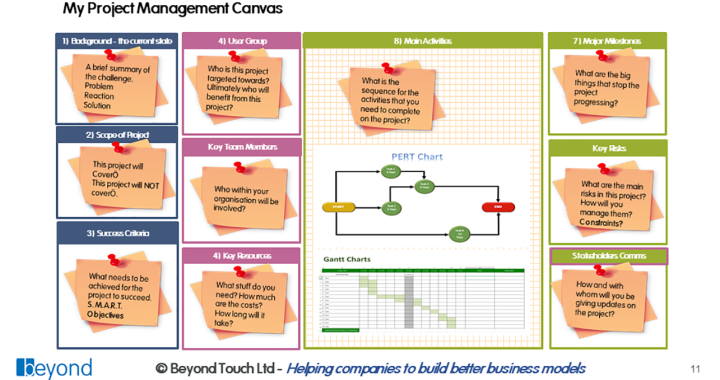Project management is a fiendishly difficult business process to get right. Whether you work from a note pad or prefer to run detailed plans backed up with copious amounts of datasheets. Either way or if you are somewhere in between, there are 10 boxes that are worth getting right.
1. Background to the project.
What is the problem that this project will solve? What will happen if you do not run the project at all? What is your solution to the problem. If you can answer these simple questions using S.M.A.R.T. objectives then you have begun.
2. Scope of the project.
Many Project Managers experience scope creep – that is what you set out to do at the beginning mysteriously changes over time. Left unchecked, this cope creep can lead to delays and cost increases, and ultimately a dissatisfied customer. So be sure to state what this project DOES include the following…This project does NOT include the following…
3. Success criteria
Articulating what good will look like for the completed project is part of the Project Initiation Documentation that you need to keep close to hand. If you can explain the project success criteria using S.M.A.R.T. objectives then you are doing well.
4. User groups
Who is the ultimate benefactor of the successful project? If you do not know this – find it out before your run head first into delivery. Successful Project managers take the customer on the journey – everything that is done on the project has this group in mind.
5. Key members of the project team
You may be working alone, or part of a bigger team. You may be leaning on the subject matter expertise of third party contractors and organisations. Have a matrix that states roles and responsibilities for everyone involved.
6. Key Resources
To succeed your project will not only need people but will also need other resources such as materials, venues, services, and a budget. If you are missing any of these from your list I suggest you dig a bit deeper into the detail. Excel should be your best friend for this.
7. Activity planning
Most projects are time-based, therefore you will need a list of tasks that need to be run in a certain order. Use a PERT diagram to get down the big stuff and then dig into the detail with a timeline based Gantt chart.
8. Milestones and deliverable
Along the journey of completing a time-based project plan you will need to put in Milestones – a target date when something will be completed. You may also need to list some deliverables – these are the tangible outputs of the project and will be evidenced to the team and/or the client to demonstrate progress made to date.
9. Key risks
Every project needs a Risk Register, often created in Excel. It shows what are the things that might go wrong and thus hinder progress. Your list would show the likelihood of it happening and the impact of this risk if it occurred. Use numbers to allow for the easy ranking of risks. Don’t forget that for every risk that is identified there should be mitigation steps to deal with it if it does occur. It is not uncommon to start off a project with just a few risks and then to add more and retire some as time passes.
10. Stakeholder communications
It is vital that you keep all aforementioned parties in the loop on the progress of the project. Agree who you need to talk to, how you will do it, and the frequency of these communications.
By using this simple guide you can start projects knowing that the basics are covered.
Need some help with training your team – call us to find how we can empower your organization with the right PM tools for you and your teams
